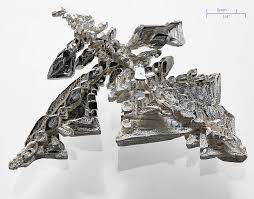Hafnium
A shiny, silvery metal that resists corrosion and can be drawn into wires. Hafnium is a good absorber of neutrons and is used to make control rods, such as those found in nuclear submarines. It also has a very high melting point and because of this is used in plasma welding torches.
Most hafnium that is produced is used to make nuclear reactor rods because controls the fission of uranium in a nuclear reactor by absorbing neutrons. Hafnium is being researched for potential use in transistors, and its high melting point allows it to be used in plasma welding torches.

